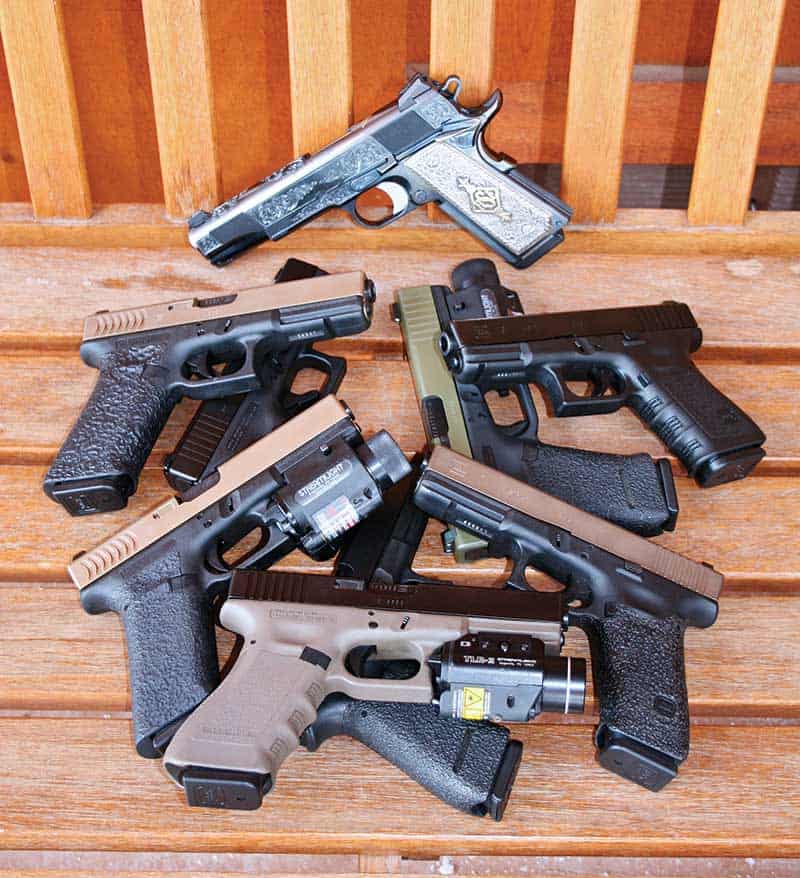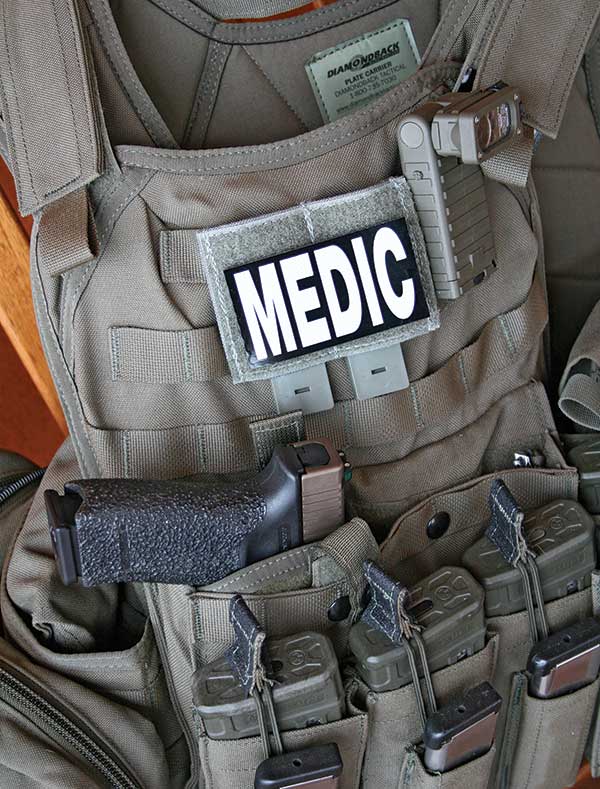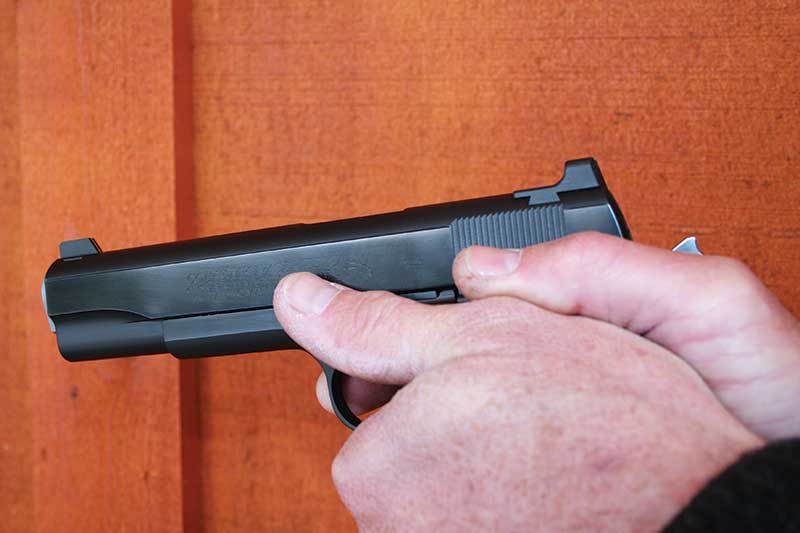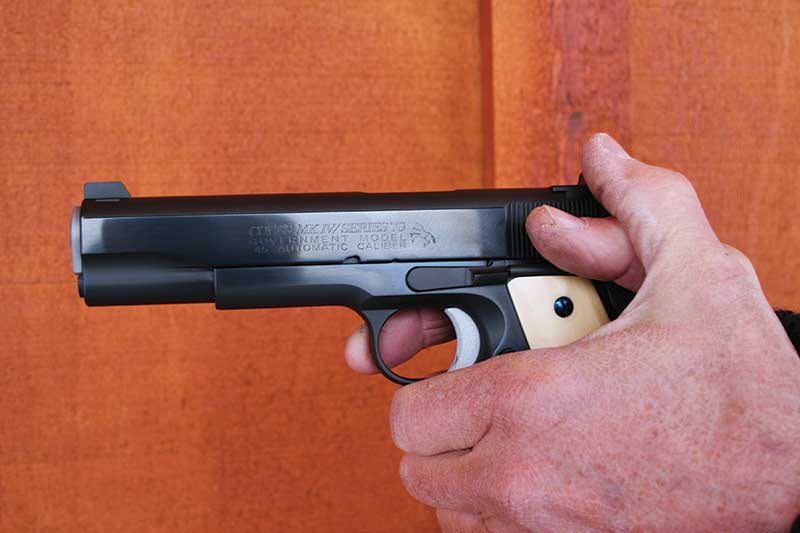No 1911 4 U
There are other choices
It is one thing to pick a pistol out at the gun store, another to actually carry it daily, but even more important is to shoot the pistol well. The polymer guns are all the rage, and I can’t and won’t say much about them one way or the other. Nor do I care, as even my wife Heidi lets a couple of high-end custom 1911s hang in her gun safe while she sorts through her half-dozen-plus Glocks. She carries them daily at her work here on the ranch and at her part-time job helping the local Sheriff’s office as an EMT. People like what they like, even though some carry guns they don’t shoot well, just so they can be in vogue or be sort of “hangin’ with the big dawg operators”… so to speak.
After using a 1911 for about 40 years, I can tell you why you shouldn’t buy one.
It is big. Yes, the 5″-barrelled 1911 full-size pistol is big, measuring a nominal 9″ long, 6″ high and 1″ thick. And don’t forget the full-size gun is the best and most reliable of its breed. I wouldn’t give you spit for the whole bunch of “chopped” 1911s. I own one 1911 Lightweight Commander. To put it bluntly: I was lucky. Made in 1949, I bought it in 1970 for $100 bucks. I have rebuilt it a lot of times over the years—and it is snippy to shoot well with full loads (as should be carried for defense), as it should at that weight. So there is no misunderstanding and no misquote, the full-size 1911 has the best potential to work well and consistently. There was a reason John built it the way it is.
Don’t buy a 1911 because it is big.
Is It Heavy?
Yes, it is 2 pounds and the steel gun is best, as far as long life and durability go. The “buffer thing” for recoil supposedly helps protect the frame while firing, but, trust me, gunsmiths have ruined more 1911s by working on them to “make ’em custom ya know,” than are ruined by firing. I have seen issues with the buffer-plastic crap coming apart and locking up the gun. Also, when the gun is shot to slide lock, often the buffer preempts “pulling” the slide to the rear to reload it, rather than using the other slide-release/lock technique.
Don’t buy a 1911 because it is heavy and sensitive to issues like rubber rings that aren’t necessary.
Mag Capacity
It holds seven rounds and one in the chamber. If I see a 1911 pistol having feeding problems, my first question to the student is: “How many rounds did you load in the magazine?” The 1911 with seven rounds in the magazine is always more reliable! You can find 8-round (and even 10-round) magazines that work. If you have some, keep them. They are an overall big-picture oddity. If you want to have more ammo in the pistol, buy a Glock.
Don’t buy a 1911 because it doesn’t hold a bucket of ammo in the magazine well.
Reliability?
The 1911 works, but sometimes requires a bit of tuning. The reason the custom gunsmiths have succeeded is because Colt got lazy and sloppy. In the late ’70s if you bought a 1911 for $500, you would then need to spend another $500, or more, to make it work. True works of art like the Pachmayr were the finest, along with others of that sort—Armand Swenson’s for example—were big-money guns in those days. Today 1911s are ideal if built by proficient companies; I own flawless guns by Baer, Burton, Morris, Springfield Custom Shop, Wilson and Volkmann.
Heidi also has a Glock that costs $400 and it is also flawless… hmmm?
Don’t buy a 1911 because it might not be reliable.
Meat & ’Taters Of Technique
First and foremost of importance are safety and the placement of the right thumb (for a right-hand shooter). Those who do not keep their thumb on top of the safety while firing need to get another gun. They will “knock” the safety on while firing the pistol under duress situations if their thumb is under the safety. My belief (actually, I know this) is it’s the joint of the thumb knuckle, which knocks the safety on. The gun quits running, and the shooter doesn’t understand why. This can get you killed.
If your response is, “But I don’t activate the grip safety with my thumb on top of the safety while firing,” then delete it. Yeah, I know all the experts say you are gonna get sued and what not, but as a younger man I was told by Colonel Cooper over lunch, “If you miss the grip safety once out of 100 draws, you should block it.” I believe him. There are some versions of a low-lever safety. If you use one, make sure it’s a good one; I have seen low-lever “knobs” break off while firing. If the grip-safety block or safety is an issue (personally or legally) for you, get a Glock… it doesn’t have a thumb safety. Or a grip safety.
Wrist
Lock your wrists. While training, hold the pistol at “ready,” look down to index and lock a correct sight picture. Raise your head and eyes to the target area. When needed, lift the pistol from the shoulders, only until the sights transpose over your target. Also, remember as the muzzle comes up, the safety comes off. You are looking to hard-wire synapses for proper placement of the pistol in your hands and wrists, so the gun will index correctly when brought on target. Back in my days at Gunsite, there was an exercise called “eyes off drill”; I now know what it was for. 1911s are big and heavy, and they recoil.
Another reason not to buy a 1911.
High Holds
Personally, I use a high hold with my thumbs stacked right over left. The left thumb could, I guess, drag on the slide, but I don’t put pressure on the slide with this thumb. The left thumb (for right-handed shooters) is the most worthless of the fingers, so be careful with its placement while firing.

Sign up for the Personal Defense newsletter here:







